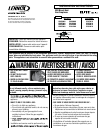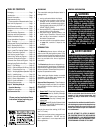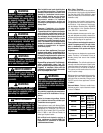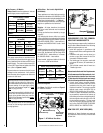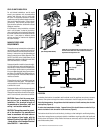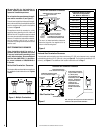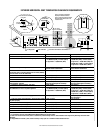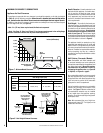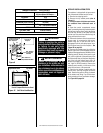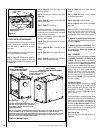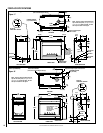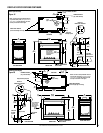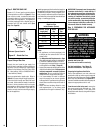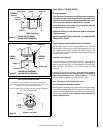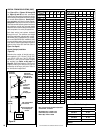
8
NOTE: DIAGRAMS & ILLUSTRATIONS ARE NOT TO SCALE.
MINIMUM CLEARANCES TO COMBUSTIBLES
Appliance And Vent Clearances
The appliance is approved with zero clearance to combustible materials on all sides (as detailed
in Table 5), with the following exception: When the unit is installed with one side flush with a
wall, the wall on the other side of the unit must not extend beyond the front edge of the unit.
In addition, when the unit is recessed, the side walls surrounding the unit must not extend beyond
the front edge of the unit (see Figure 3).
*Note: 3 in. (75 mm) above any horizontal/inclined vent component.
**Note: See Page 10, Step 1 and Figure 12 for clearance requirements to the nailing ange
located at each side of the unit and any screw heads adjacent to it.
Hearth Extension - A hearth extension is not
required with this appliance. If a hearth exten-
sion is used, do not block the lower control
compartment door. Any hearth extension used
is for appearance only and does not have to
conform to standard hearth extension instal-
lation requirements.
Shelf Height - To provide for the lowest pos-
sible shelf surface, use the alternate rear vent
outlet, the venting attached to the top vent should
be routed in a way to minimize obstructions to
the space above the appliance. Do not insulate
the space between the appliance and the area
above it (see Figure 8). The minimum height
from the base of the appliance to the underside of
combustible materials used to construct a utility
shelf in this fashion is shown in Figure 8.
The appliance should be mounted on a fully
supported base extending the full width and
depth of the unit. The appliance may be located
on or near conventional construction materials.
However, if installed on combustible materials,
such as carpeting, vinyl tile, etc., a metal or
wood barrier covering the entire bottom surface
must be used.
Wall Finishes / Surrounds / Mantels
Note: Combustible wall finish materials and/
or surround materials must not be allowed to
encroach the area defined by the appliance front
face (black sheet metal). Never allow combus-
tible materials to be positioned in front of or
overlapping the appliance face (see Figure 66
on Page 36) and Figure 9 on page 9.
Non-combustible materials, such as surrounds
and other appliance trim, may be installed on
the appliance face with these exceptions: they
must not cover any portion of the removable
glass panel or control compartment.
Vertical installation clearances to combustible
mantels vary according to the depth of the
mantel. See Figure 7. Mantels constructed of
non-combustible materials may be installed
at any height above the appliance opening;
however, do not allow anything to hang below
the fireplace hood.
Note: We recommend the use of high tem-
perature paint (rated 175° F or higher) on the
underside of the mantel.
inches (millimeters)
Figure 8 -
Shelf Height Minimum Clearances
Top of
Appliance
Figure 7 - Minimum Mantel Clearances
4 (102)
2
(51)
4
(102)
6
(152)
8
(203)
10
(254)
12
(305)
6 (152)
10 (254)
14 (356)
12 (305)
8 (203)
.oNledoM
)mm(sehcnithgieHflehS
woblEeergeD09enOhtiw-tneVpoTkcaBehttuOthgiartS-tneVraeR
tneVeruceSxelFeruceStneVeruceSxelFeruceS
TSVDE
FPVDE
RCVDE
LCVDE
8/735)8631(8/555)3141(8/114)5401(8/114)5401(
Shelf Above Fireplace
With Rear Venting
Do not insulate the
space between the
appliance and the
area above it.
Shelf Height
(see table)
Shelf Above Fireplace
With Top Venting
Do not insulate the
space between the
appliance and the
area above it.
Shelf Height
(see table)
Mantel Depth
Front or Rear Face
of Appliance



